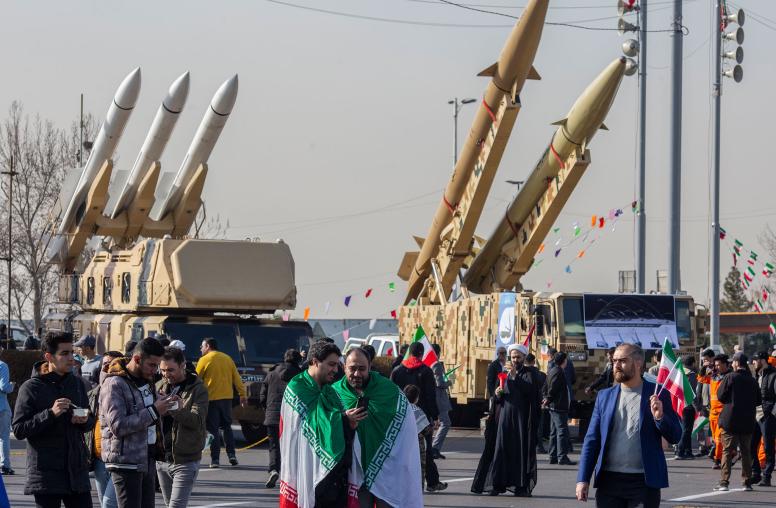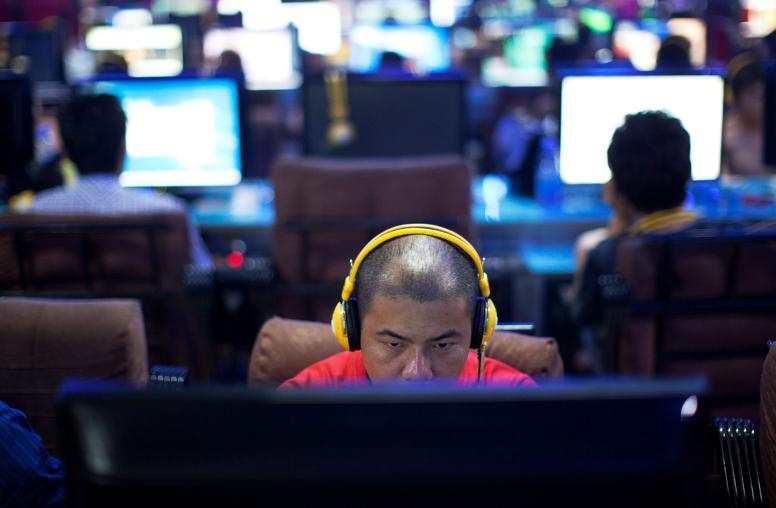China: The International Community is Failing Xinjiang’s Uyghurs
It’s time to re-evaluate the atrocity prevention toolkit.
Documented evidence of large-scale human rights abuses in China’s northwestern Xinjiang region has painted a clear picture that Beijing is perpetrating mass atrocities against Uyghurs and other Turkic Muslim ethnic groups. But even in the face of transparent evidence, the strategies the international community and the United States typically deploy to prevent atrocities have failed to stop the problem. The United States and like-minded countries have an obligation to act to end the ongoing atrocities and to protect the Uyghur people. While many important steps have been taken, none have had a noticeable impact on Beijing. It’s time for the international community to take stock of the atrocity prevention toolkit, to consider why it has failed the Uyghurs, and to discuss how these failures can inform updates or adaptations to respond to the Xinjiang crisis.

Since 2018, human rights researchers have documented solid evidence of an intensified campaign to assimilate the Uyghur people that hinges on several key pillars: a mass detention and forced labor program, a sophisticated mass surveillance system, restrictions on cultural and religious practice, and population control measures. More than 1.3 million people—by China’s own admission, though researchers allege more—have been arbitrarily detained in political “re-education” camps in the Xinjiang Uyghur Autonomous Region (XUAR), where they have faced political indoctrination, forced labor, separation from their families, and, in some cases, torture. Once released, they remain under a surveillance system so strict rights groups allege it has turned Xinjiang into an “open-air prison.” Rights groups have also documented the use of forced sterilization and mandatory birth control to slash Uyghur birth rates, as well as strict controls on Islamic practice, and a campaign to destroy mosques and cultural heritage sites.
How the Toolkit Failed
To date, however, the international community has failed to address the situation in Xinjiang in any meaningful way. China’s extensive control over its population, economic strength, and ability to manipulate international human rights norms to accommodate practices that conflict with such norms have limited the effectiveness of the tools typically employed to deter and/or halt atrocities. The international community has a toolkit, evolved from years of practice responding to conflict scenarios, of bilateral and multilateral interventions designed to mitigate atrocity risk. These tools include:
- Early warning mechanisms: Formal and informal early warning mechanisms are typically used to signal rising atrocity risk, but do not exist in any robust form in Xinjiang. Security and operational constraints on civil society and the diplomatic community have prevented the flow of information from XUAR. The diaspora community and researchers outside the country have worked to fill this gap, providing information on individual Uyghur victims and using satellite data to document detention centers. Leaked government documents have exposed the clear intent of the Chinese government to pursue repressive policies. Regardless, the slow flow of information constrained the ability of diplomats to engage before the atrocities began.
- Diplomatic intervention: Globally, recent atrocities have occurred during situations of armed conflict or severe political instability, where diplomatic intervention can be used to deter action or provide support and legitimacy to one of the opposing parties in a conflict. In Xinjiang, however, the conflict scenario is markedly different: It is not between two conventional warring parties but between the state and civilians, and the political situation remains stable under Beijing’s control. Low-level, sporadic clashes between civilians and police have broken out, but Beijing’s strict security apparatus has, so far, kept a lid on potential escalations. This context narrows the kind of opportunities for diplomatic intervention that tend to be readily available during more conventional violent conflicts. Moreover, China has resisted diplomatic pressure to change these policies, framing their handling of the Uyghur population in Xinjiang as a matter of internal sovereignty, blocking diplomatic interference from outside.
- Foreign aid, sanctions, and visa restrictions: The atrocity prevention toolkit’s financial mechanisms have also proved insufficient for deterring or halting atrocities in XUAR. As the world’s second-largest economy, China does not depend on foreign assistance, and is therefore unlikely to respond to the “stick” or “carrot” measures it offers. Party leaders most responsible for the ongoing atrocities maintain few assets outside of China, limiting the effectiveness of individual sanctions. More comprehensive or multinational sanctions or import restrictions on Chinese goods could have an impact but present the political challenge of building a coalition capable of challenging China’s political and economic power.
- U.N. resolutions: China’s position at the U.N. makes concerted action to halt the atrocities difficult if not unlikely. Beijing’s permanent seat on the Security Council provides the opportunity to veto resolutions calling for the end of the violence or for concrete U.N. action to halt it. Further, China has built up a constituency of supportive states that would likely oppose a General Assembly resolution. The closest the U.N. has come to date to directly addressing the atrocities in Xinjiang was in an exchange of letters at the Human Rights Council. In the summer of 2019 a group of 22 states, including the United States, submitted a letter to the Human Rights Council calling upon China to halt its policies of mass detention. This letter was followed days later by one signed by 37 states in defense of China’s human rights policies as necessary to address threats of terrorism and extremism. The situation was repeated again in October of this year, when 39 countries including the United States submitted a joint statement calling on China to respect the rights of minorities, and China responded with one signed by 45 states defending its policies. Beijing has consistently framed its efforts in Xinjiang as a way to prevent terrorism and extremism, playing on these global threats to build support for their efforts.
- U.N. fact-finding missions: China is similarly unlikely to submit to U.N. fact-finding or investigative mechanisms, which are how the U.N. collects evidence and makes preliminary determinations on potential atrocities. Beijing has a history of declining to invite U.N. special rapporteurs to evaluate its progress in delivering on its human rights obligations, including the special rapporteur with a mandate to consider arbitrary detention. In June, Beijing rejected a call by 50 independent U.N. experts for greater scrutiny on China’s rights record and for China to allow independent missions into the country to investigate. Further, Beijing has pursued a consistent campaign to undermine U.N. human rights norms in favor of “dialogue” among states rather than accountability in the application of human rights standards.
Adapting the Toolkit
It’s time to recognize that the existing atrocity prevention toolkit was developed based on conflict contexts that bear little resemblance to the current situation in Xinjiang. Like-minded international actors should reassess the toolkit to consider necessary adaptations to halt ongoing atrocities and to protect the Uyghurs.
Washington should play a key role in leading this conversation, and the incoming administration has an important opportunity to do so. American leadership is critical to the success of the atrocity prevention agenda, and prevention is a U.S. national security priority. The current administration has already taken decisive steps to deter China’s forced labor program in Xinjiang and elevate attention to the Uyghur crisis within the U.S. government, including by imposing sanctions on key Chinese officials and government entities, banning cotton imports from a government-affiliated producer in Xinjiang, seizing other goods believed to be made with forced labor, and removing a Uyghur-linked group from a list of foreign terrorist organizations. These efforts can be strengthened and expanded upon to improve their effectiveness.
Several promising U.S. efforts to halt the violence remain pending and may support consideration of the adaptation of the atrocity prevention toolkit. The State Department has considered issuing a determination clearly labeling China’s actions as mass atrocities or genocide. Such a determination would be the strongest message to date that the atrocities must end and would provide critical support for ongoing advocacy efforts on behalf of the Uyghurs. Further, two actions under consideration by Congress, the Uyghur Forced Labor Prevention Act and the Uyghur Forced Labor Disclosure Act, point toward possible new tools in the atrocity prevention toolkit. Existing U.S. legislation prohibits use of forced labor, but the first bill would put the burden on importers to prove that goods coming from the XUAR or using workers from XUAR are not made with forced labor. The second bill would require U.S. companies to actively audit their supply chains for forced labor. If passed, the two bills have the potential to put economic pressure on China over the Uyghur issue in a way that previous sanctions legislation has not and could pilot a new atrocity prevention strategy that engages private-sector actors in prevention and deterrence efforts.
These steps are important, but new tools will also be needed. The incoming administration should take steps to integrate existing efforts into a more comprehensive and visible strategy that incorporates new tools to prevent further atrocities against the Uyghurs. These tools could include building on existing sanctions by coordinating sanctions with Canada, the United Kingdom, and other countries with existing sanctions legislation, even if multilateral U.N. sanctions aren’t possible. It should also include building support among a broader base of countries to speak out against China’s policies. Policymakers should also consider international justice mechanisms and fact-finding missions that can be pursued even without access to investigations within China’s borders, like the U.N. did with the 2013 Commission of Inquiry for North Korea.
The United States and like-minded countries must quickly do more to stop ongoing atrocities against the Uyghurs. The incoming U.S. administration has an opportunity to play a leading role in a new approach to this crisis, and the starting point of its approach should be taking a hard look at what atrocity prevention tools are available, what tools work best for the Uyghur situation, and what new tools are needed. Such an approach would not only serve the Uyghur people but could also help adapt the atrocity prevention toolkit to address evolving future challenges.



